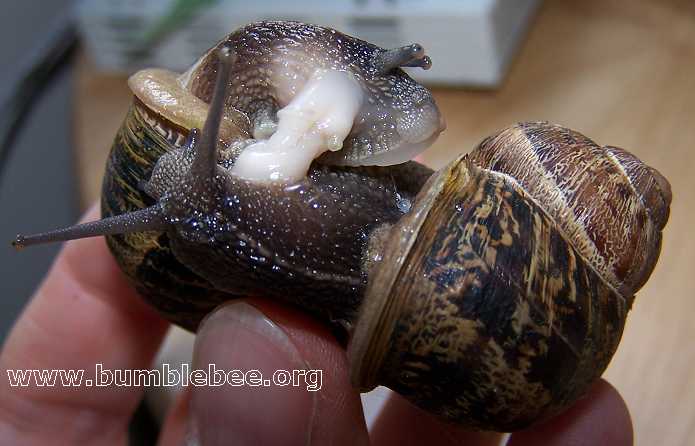Reproduction
Most Pulmonate snails are monecious (Hickman et al. 2009). Another word for this is hermaphroditic meaning that the organism houses both male and female reproductive organs (Hickman et al. 2009). No species of snails have separate sexes (Hickman et al. 2009). They do, however, undergo sexual reproduction and many Gastropods perform what are called courtship ceremonies in which spermatophores (bundles of sperm) are exchanged (Hickman et al. 2009). This helps to prevent self-fertilization (Hickman et al. 2009).
Eggs of land snails, like Guppya sterkii, are generally laid in holes in the ground or under logs (Hickman et al. 2009). Many terrestrial organisms undergo what is called direct development (Hickman et al. 2009). This means that the juvenile form of the organism hatches directly from the egg and does not have to undergo any other larval stages before it makes it to the adult stage (Hickman et al. 2009).
